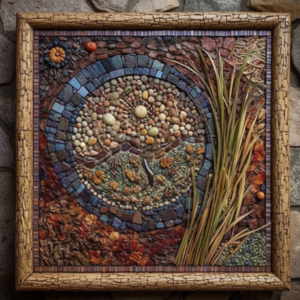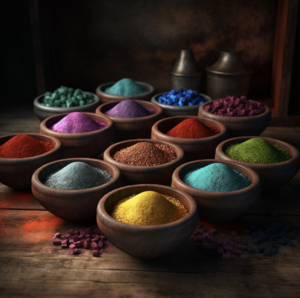Kayse (prime)/Aelotoi Art
Title: Aelotoi Art
Author: Kayse Thaellian
"document" is not in the list (essay, letter, periodical, poetry, short story, song, storyline, vignette) of allowed values for the "Creative-work-type" property.
Foreword
Despite living thousands of years as slaves, the Aelotoi people still found a way to create an artistic culture and embrace a creative outlet amongst themselves. With resources and supplies limited, most of their art served a dual purpose of utility and expression. They named their art, Keh’suta’ka, loosely translated to beautiful imagination. The idea behind Keh’suta’ka is the concept that art can be anything and found anywhere.
On Bre’Naere the pieces from that era are described as crude and primitive, as materials were scarce. Tools to paint, carve or weave were also makeshift and contributed to artwork taking longer to make or not as refined. Within their twenty years now on Elanthia, Aelotoi art has evolved, yet still possesses the same techniques that were established in their home world. Due to these two distinct periods of time that influenced Aelotoi culture and art, the race now uses two terms to describe the different art periods: Keh’dyre and Keh’cyr. Keh’dyre being “art of darkness” from their time on Bre’naere and Keh’dyre meaning “art of light” to describe how their artistry has transitioned.
The Aelotoi strongly embrace art as an expression of their freedom. It is my hope within this document to provide a lens into the materials, process, and evolution of Aelotoi art.
~Kayse Thaellian, Vaer’sah Clan
Types of Art
Due to the fact Aelotoi art originated from found items and nature itself, the Aelotoi established names to represent the main categories of art they practice. The naming scheme uses the elements and aspects of the outdoors as a suffix and Keh’ being a prefix that pertains to the essences of art and beauty. As each process and material is explained, the reasoning behind the naming will become more apparent and clear.
| Mosaics | Keh'yllyc | wind |
| Pottery | Keh'ka'ada | of fire and land |
| Painting | Keh'yrrilth | water |
| Woodworking/Marquetry | Keh'fyr | trees |
| Weaving | Keh'thebe | plants |
Keh'yllyc (Mosaics)
Mosaics that existed in a mobile form were considered rare on Bre’Naere. Elaborate designs or labyrinths were created on the ground to admire, but could quickly be destroyed if the overseers arrived. The materials to design a mosaic pull strongly from the concept of Keh’suta’ka considering most items are found within nature. Multi-hued pigments, seeds, grains, and scraps of fabric were utilized to add shading, texture, and color to this artform.
If something truly unique was found in nature, like a piece of sea glass or unique stone, those objects were saved for a permanent mosaic. When coveted paper or even a canvas of goat skin could be created, the Aelotoi would work by firelight to construct mosaics using a hide-based animal adhesive from paeline goats. These artifacts were still rather small so they could be easily concealed, but it is rather uncommon that many made it to Elanthia.
Among the Vaer’sah Clan, mosaics were also used as markers or code to help direct other Aelotoi. Scouting parties used directional markers to help each other find resources as well as what way their slave encampment was located. Arriving back late resulted in severe punishment from the kiramon, regardless of whether the Aelotoi returned with an abundance of supplies. Encoded mosaics were also left in the wild by some escaped Aelotoi, secretly directing others to their location for safety.
With the independence to now keep flora and plants in their possession, Aelotoi on Elanthia have used mosaics to celebrate this. Vibrant murals of succulents, fresh flowers, and moss are now the most popular mosaic components, with living masterpieces displayed in hanging boxes or full garden spaces.
Although some Aelotoi are still resistant to wear or even include gems in their art, those of the Vaer’sah clan also use gemstones as their preferred medium.
Keh'ka'ada (Pottery)
Pottery served utilitarian purposes beyond the aesthetic, but much of what was created was rather rudimentary due to lack of techniques and resources. Dishes, cups, mortar and pestles, and even utensils were made to make the Aelotois’ lives seem a little more civilized at times despite their living conditions.
There were no kilns on Bre’Naere, so in order to ‘fire’ pottery, Aelotois had to create a makeshift one within their campfires. Once the flames were hot enough, the clay pieces would be placed within it. Combustibles that were light weight would surround the objects creating a mound within the fire. Aelotoi had to be careful to not crush or crack the pieces once they began layering tinder and other fuel on top.
After the fire burned for several hours, the flames would be extinguished with sand to remove oxygen in the area. The next day, artisans dug out their artwork after the ashes had cooled down. This technique attributed to Aelotoi pottery looking semi-burnt with a rough texture. Because they lacked any paints or ability to lacquer the clay, all the items came out with a matte finish.
Once in Elanthia, kilns and glazing opened up a whole new world of pottery appreciation from the Aelotoi. The ability to shape clay better with pottery wheels as well as dye it, revolutionized Aelotian pottery. Of course, nature is usually a subject of any Aelotoi art, but as the dragonfly becoming their new symbol of freedom on Elanthia, many works of art are dedicated to the insect.
Keh'yrrilth (Painting)
Drawing and painting were hobbies that were easy to hide within the mining caves of Bre’Naere. Most Aelotoi history was recorded through word of mouth and stories, but occasionally pictographs appeared on the walls deep within the caverns. These ranged from historical events, artistic renderings and secret messages.
The Gaeh’dah clan spent the most time within the tunnels and therefore was responsible for the paintings within the caves. Some pictographs were simplistic to point out working conditions and alert other Aelotoi to where certain metals and gems were located beneath the rock. Deeper within the passages, paintings of a past civilization or stories of revolts against the overseers decorated the walls.
In the evening, the Gaeh’dah would guide other Aelotoi into the mining caves to see some of the art as if it was an art gallery. Expeditions such as these could be dangerous, but worth it for some normalcy within the Aelotois’ lives.
Paints for parchment/rock, hides, or clothing were made from grinding herbs, flowers and spices. Certain metals like copper, alum, iron and tin were added to some pigments to get specific color combinations and hues. A variety of plants could be used for multiple color dyes depending on the parts that were used. As the Aelotoi made their transition to Elanthia, they began to experiment and find new alternatives to the plants on Bre’Naere to create the vibrant hues we see today in their artwork.
Tattoos were another art form that was embraced by the Aelotoi. With simplistic designs or symbols, inked to show allegiance to a clan or remembrance of loved ones.
After the portal, Aelotoi adopted traditional painting methods in the East as well as embraced a new method, since they had the freedom to do so. Wing splattering, where the Aelotoi’s wings were painted with various colors and flicked against a canvas, became a fun and unique way for Aelotoi to encompass their own style and add their personal touch to this artistic form.
Keh'fyr (Woodworking/Marquetry)
Wood has been a meaningful medium when it comes to art of the Aelotian. Due to most Aelotoi’s dislike of gems, most of their jewelry, ornaments and the like are made of the material. Like pottery and weaving, wood making didn’t become more refined until after the portal. Once settling on Elanthia, Aelotoi became fascinated by the art of marquetry and became rather skilled at it as well.
The makeshift tools they crafted didn’t stop them from creating dishes, utensils, toys, and other trinkets on Bre’Naere.
Keh'thebe (Weaving)
Weaving is arguably the artform that is used for utility the most from the Aelotoi. Which is why it was an activity that the overseers allowed the Aelotoi to do without disturbance or punishment. Clothing and baskets were the key items produced. Garments were hardly ornamental or fancy back on Bre’Naere, with the main focus being utilitarian and simple.
Most baskets and wood items were created from that of the Zydris trees--which depending on the season yielded different hues of barks. Towards the end of Charlatos, a delicate outer husk of silvery gold bark can be unraveled from zydrises and used for woven goods or parchment.
Simple jewelry of braided goat hair, rocks, or flowers were created.
Like all the art forms mentioned previously, Aelotians were adept at the materials they had on Bre’Naere but really flourished more so once arriving in Elanthia. When it came to textiles, they invented new fabrics and materials to truly embrace their own Aelotian style.









